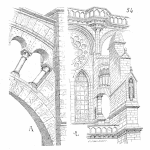
Once an ostrich sticks its head in the sand, any risk it might be facing is gone, right? Of course not!
I believe we are living – relative to electric system reliability – with what we call the ostrich effect. Most of us have our heads stuck in the sand. But guess what? The sand is crumbling, and the ostrich is starting to see things; things he can’t hide from anymore. [Read more…]












 Ask a question or send along a comment.
Please login to view and use the contact form.
Ask a question or send along a comment.
Please login to view and use the contact form.